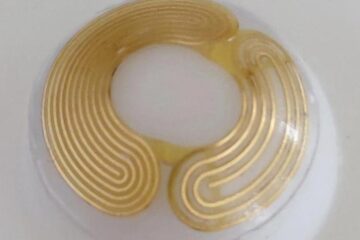New Method Improves Modeling of Electrons’ Motions

Although in principle quantum mechanics can describe the properties of molecules and materials in which the electrons’ motions are strongly correlated, in practice such computations are formidable. Molecules can have from 10 to hundreds or thousands of electrons, and the computational cost of modeling molecules increases exponentially with the number of strongly correlated electrons.
Mazziotti, an associate professor in chemistry at the University of Chicago, has been developing a new approach in which any molecule’s energies and properties can be computed as a function of just two of the molecule’s many electrons. Such a strategy provides accurate approximations for strongly correlated electrons without an exponential computational scaling.
In the Feb. 25 issue of Physical Review Letters, Mazziotti announced a newly improved method that is at least 10 to 20 times faster than previous methods.
Mazziotti’s original approach already has been applied to studies of aromatic rings, which are employed in computer displays, and of the energy-transfer process that enables fireflies to glow in the dark.
“The present advance will enable treatment of larger molecules and materials with strongly correlated electrons,” he said.
In the Physical Review Letters article, Mazziotti applied this method to the metal-insulator transition of metallic hydrogen, which forms under the intense pressure found at the cores of Jupiter and Saturn. Computing the electronic properties of a dissociating chain of 50 hydrogen atoms during this transition would require 10 octillion (1028) variables from traditional quantum solutions, while the world’s largest supercomputers can treat approximately a billion (109) variables. The two-electron approach, however, requires only 9.4 million variables and 3.9 million constraints.
The algorithm in Mazziotti’s method is a member of a special family of algorithms known to mathematicians as semidefinite programming. The advance in the Physical Review Letters article also has applications in engineering, computer science, statistics, finance, and economics.
“Remarkably, behind seemingly unrelated phenomena, there lies a common mathematical thread,” Mazziotti said.
In Mazziotti’s method, the energy of a molecule with many electrons is minimized as a function of two electrons, which are constrained to represent all of the electrons.
“In the same fashion, in finance, one might be optimizing profit over a set that is constrained to represent a certain amount of money or a given inventory of products,” he explained. “Both problems require a search — or optimization —of a quantity subject to real-world constraints. In finance these constraints will follow from the laws of business while in chemistry they will follow from the laws of quantum mechanics.
Citation: “Large-Scale Semidefinite Programming for Many-Electron Quantum Mechanics,” David A. Mazziotti, Physical Review Letters, Vol. 108, No. 8, Feb. 25, 2011.
Funding sources: National Science Foundation, Army Research Office, Microsoft Corporation, Dreyfus Foundation, and David-Lucile Packard Foundation
Media Contact
More Information:
http://www.uchicago.eduAll latest news from the category: Physics and Astronomy
This area deals with the fundamental laws and building blocks of nature and how they interact, the properties and the behavior of matter, and research into space and time and their structures.
innovations-report provides in-depth reports and articles on subjects such as astrophysics, laser technologies, nuclear, quantum, particle and solid-state physics, nanotechnologies, planetary research and findings (Mars, Venus) and developments related to the Hubble Telescope.
Newest articles

‘Smart’ contact lenses could someday enable wireless glaucoma detection
Most people with early-stage glaucoma don’t know they have it, even though early treatment is key to reducing vision loss. While detecting a subtle increase in eye pressure helps doctors…

New tech may lead to smaller, more powerful wireless devices
Good vibrations… What if your earbuds could do everything your smartphone can do already, except better? What sounds a bit like science fiction may actually not be so far off….

Caution, hot surface!
An international research team from the University of Jena and the Helmholtz Institute Jena are demystifying the mechanisms by which high-intensity laser pulses produce plasma on the surface of solids….





















